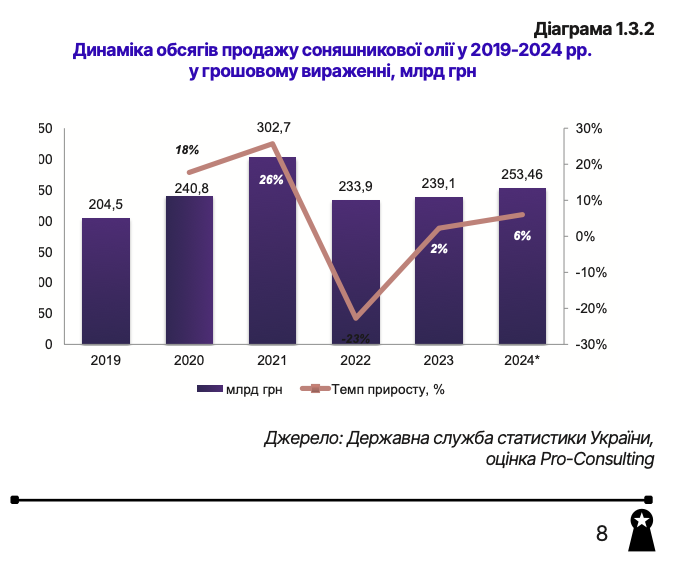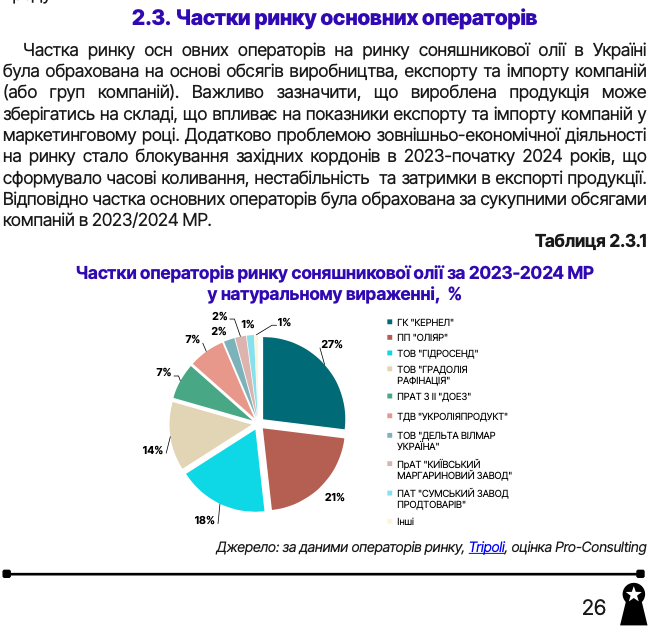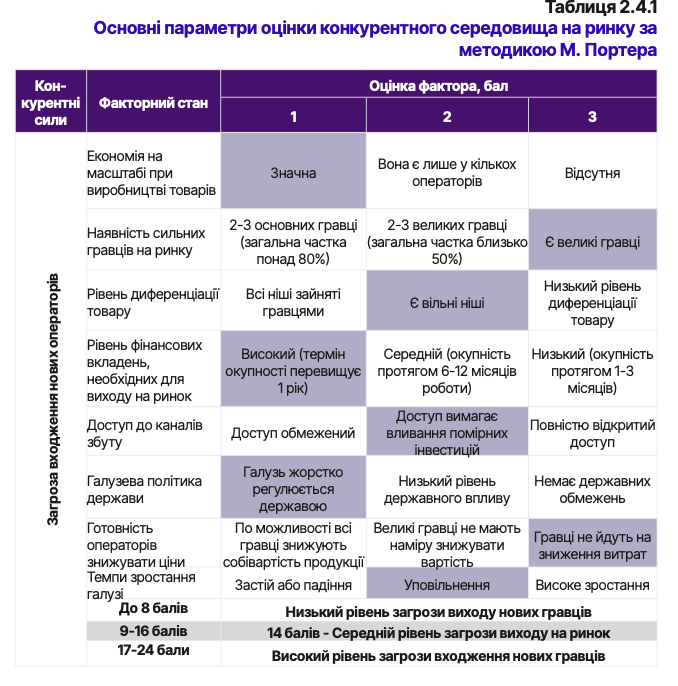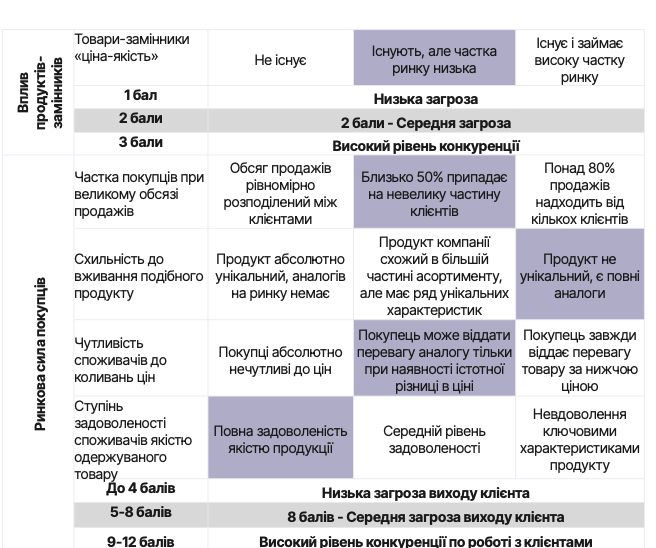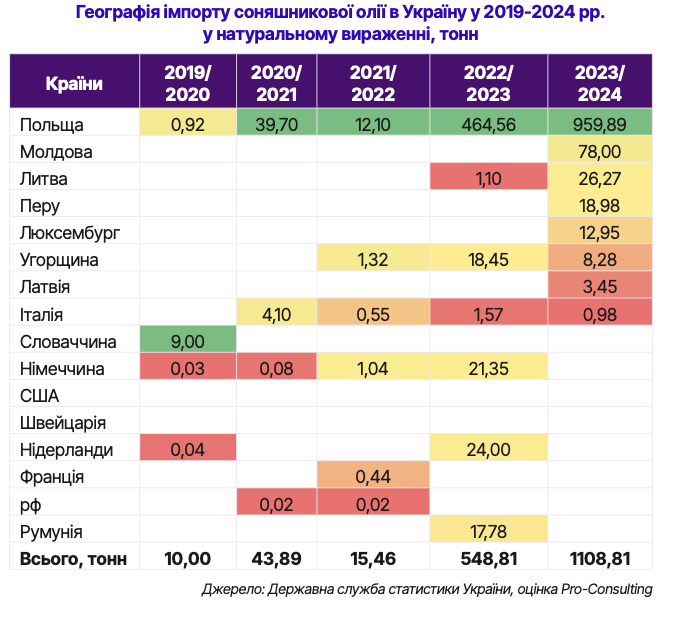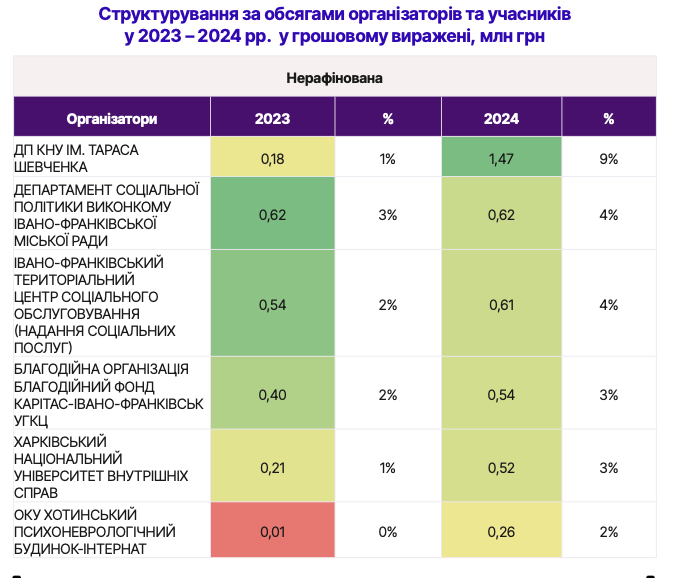The client approached us with the need to obtain a comprehensive overview of the sunflower oil market in Ukraine in 2025.
The main objective was to understand:
– the current state of the market and its dynamics;
– the competitive landscape;
– export opportunities and challenges;
– the impact of the war and shifts in global trade;
– industry development prospects through 2030.
We conducted a comprehensive study that included:
1. Desk research of official statistical sources (State Statistics Service of Ukraine, customs statistics, international databases).
2. Assessment of production, domestic consumption, and export potential.
3. Analysis of key market players and their market shares.
4. Evaluation of price trends in both domestic and international markets.
5. SWOT and PESTLE analysis to assess the risks and opportunities of the industry.
Main Research Document Structure
1. Market Capacity and Production Dynamics
– Detailed assessment of sunflower oil production volumes in Ukraine;
– Analysis of long-term dynamics (retrospective and current trends);
– Identification of factors influencing seasonality and production volumes.
2. Domestic Consumption and Key Demand Drivers
– Analysis of consumer structure in the domestic market;
– Identification of main consumer groups (households, HoReCa, industry);
– Factors shaping domestic demand: income levels, food trends, price elasticity.
3. Export Geography and Key Trade Partners
– Distribution of exports by countries and regions;
– Analysis of dependence on key trade partners;
– Prospects for market diversification and assessment of access barriers.
4. Price Dynamics in Domestic and Global Markets
– Analysis of changes in domestic procurement and retail prices;
– Tracking fluctuations in global prices of oil and related products (grains, soybean oil, palm oil);
– Impact of currency fluctuations and global crises on pricing policy.
5. Competitive Environment: Key Producers and Their Strategies
– Identification of the largest market players and their shares;
– Comparative analysis of business models: vertical integration, export orientation, private label;
– Assessment of development strategies: investments, diversification, entry into new markets.
6. Macroeconomic Factors and Regulatory Environment
– Analysis of the impact of tax and customs policies;
– Role of state support programs for the agricultural sector;
– Impact of the energy crisis, inflation, and currency fluctuations on the sector.
7. Key Industry Challenges
– Consequences of military actions: logistical constraints, destroyed infrastructure, relocation of production;
– Intensification of global competition (particularly from Turkey, Argentina, India);
– Instability of global demand due to economic and political factors.
8. Industry Outlook to 2030
– Baseline, optimistic, and pessimistic scenarios;
– Assessment of domestic consumption growth prospects;
– Export forecasts considering global trends toward healthy eating, organic products, and alternative oils.
The client received a comprehensive strategic business development roadmap, which became a practical tool for making both managerial and investment decisions. The document included:
1. A comprehensive assessment of the current state of the industry, with detailed insights into key trends, influencing factors, and investment attractiveness indicators. This enabled the client to clearly identify the strengths and weaknesses of their own business in the market context.
2. A scenario-based forecast for 2025–2030, incorporating different development scenarios (baseline, optimistic, and risk-based). This allowed the client to prepare for multiple possible outcomes and minimize risks.
3. Recommendations for optimizing export strategies, taking into account global trade trends, the potential of specific geographic markets, and international competition.
4. An analysis of risks and opportunities in a global context, including the impact of military actions, changes in the regulatory environment, logistics instability, and competitive pressures in international markets.
5.Practical advice on diversifying sales channels, including entering new trade platforms, developing cooperation with marketplaces, and expanding the geographic presence of Ukrainian sunflower oil.
